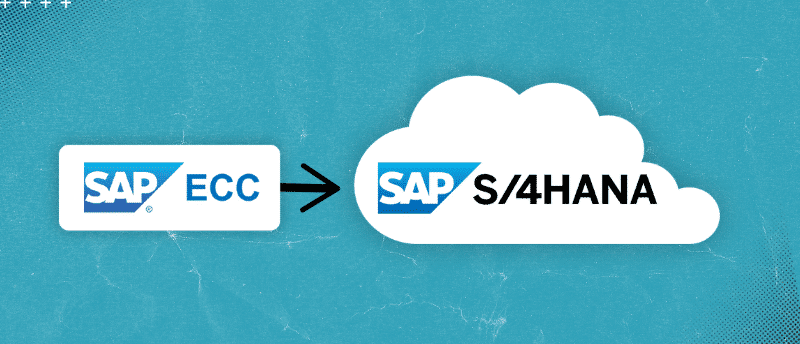
SAP ECC to S/4HANA Upgrade
A Complete Guide to Strategy, Planning, and Execution
SAP
Jitesh Dua
4/15/20253 min read



SAP’s announcement to end mainstream maintenance for ECC by 2027 has triggered a major shift in the ERP landscape. Organizations across the globe are now preparing to transition from SAP ECC to SAP S/4HANA, SAP’s next-generation intelligent ERP suite. However, this isn’t just a technical upgrade — it’s a business transformation. The move to S/4HANA requires deep strategic planning, the right deployment model, and a clear understanding of the available transition paths.
This guide covers:
Implementation approaches: Brownfield, Greenfield, Bluefield
Cloud vs. On-Premise deployment options
SAP programs: RISE with SAP, GROW with SAP, BTP, BTaaS
Budgeting and business case development
How to prepare for your migration
Potential challenges and how to overcome them
Best practices and common pitfalls
How ERPMandi can help
Why Migrate to SAP S/4HANA
S/4HANA offers a simplified data model, real-time analytics, embedded AI, improved user experience with Fiori, and long-term support. It is designed to support intelligent enterprises with agility, efficiency, and insight.
Migration Strategies: Brownfield, Greenfield, Bluefield
Brownfield (System Conversion)
A technical migration of your existing ECC system to S/4HANA. Best suited for companies with stable, efficient processes they want to retain.
Pros: Retains customizations and data, faster go-live, lower cost.
Cons: Carries forward legacy issues, limited modernization.Greenfield (New Implementation)
A clean-slate reimplementation with redesigned processes. Ideal for companies undergoing transformation or with inefficient legacy systems.
Pros: Clean setup, SAP best practices, supports innovation.
Cons: Higher cost, longer timelines, full data migration needed.Bluefield (Selective Data Transition)
A hybrid method that allows selective process redesign and data migration. Best for phased or strategic migrations.
Pros: Balanced approach, flexible, phased modernization.
Cons: More complex to plan and execute.
Cloud vs. On-Premise Deployment
On-Premise: Best for companies with strict compliance needs or requiring high customization. Offers full control but has higher cost.
Public Cloud: Ideal for SMBs and fast adopters. Lower cost and rapid deployment but less customization.
Private Cloud: A middle ground with flexibility, scalability, and managed infrastructure.
SAP’s Transformation Programs
RISE with SAP: A bundled subscription offering transformation-as-a-service for larger enterprises. Includes S/4HANA Cloud, Signavio, BTP credits, technical services, and infrastructure.
GROW with SAP: Built for SMBs to adopt S/4HANA Public Cloud quickly using pre-configured processes.
SAP BTP (Business Technology Platform): Enables integration, extension, AI, and analytics capabilities across SAP and non-SAP systems.
BTaaS (Business Transformation as a Service): The overarching concept supporting business innovation and digital acceleration using SAP tools and partners.
Planning Budget and Business Case
Key costs include licenses, infrastructure, implementation services, data migration, training, and change management.
To build a business case, align ERP transformation with strategic goals, highlight process efficiencies, future innovation, risk mitigation post-2027, and total cost of ownership over 5–10 years.
How to Start Preparing
Assess your current SAP landscape using tools like SAP Readiness Check.
Define future business goals and desired innovations.
Evaluate the best migration approach (brownfield, greenfield, or bluefield).
Choose the right deployment model (cloud or on-premise).
Select the right SAP program (RISE, GROW) and implementation partner.
Plan for change management, testing, training, and phased rollout.
Common Challenges
Resistance to change from users
Poor data quality and migration issues
Underestimated training and testing effort
Scope creep and cost overruns
Misalignment between business and IT
Do’s and Don’ts
Do:
Start early with a clear roadmap
Engage business users from the start
Clean and prepare your data
Prioritize training and testing
Invest in change management
Don’t:
Treat it as a purely technical project
Rebuild unnecessary customizations
Underestimate the scope and resources required
Ignore cloud-readiness or future scalability
How ERPMandi Can Help
ERPMandi brings over 25 years of ERP experience across industries and platforms, including deep SAP expertise. We guide clients through every phase of SAP S/4HANA migration:
Business process readiness using pre-built industry process libraries
Assessment of current systems and migration path selection
Vendor shortlisting, evaluation, and meeting facilitation
Negotiation support and contract/scope finalization
Program management and post-go-live support
Our ready-to-use Business Process Master Lists help organizations shorten the readiness phase, reduce consulting effort, and improve project outcomes. Whether you’re just starting or looking to finalize a vendor, ERPMandi provides the strategic edge and hands-on support you need.
Ready to plan your SAP S/4HANA upgrade? We’re here to help.
Email: info@erpmandi.com
Let’s transform your ERP intelligently and efficiently.
#SAPMigration #S4HANA #SAPUpgrade #RISEwithSAP #GROWwithSAP #SAPCloud #SAPHANA #S4HANA2025 #ERPTransformation #DigitalCore #BrownfieldMigration #GreenfieldMigration #BluefieldApproach #SAPBusinessTechnologyPlatform #BTaaS #CloudERP #OnPremiseERP #ERPStrategy #ERPConsulting #ERPImplementation #SAPPartner #SAPReadiness #GenerativeAIforERP #GEOOptimizedERP #ERPMandi
